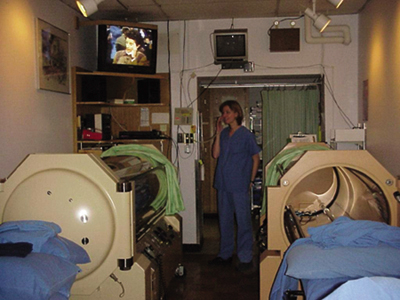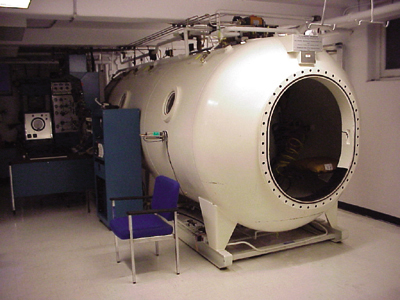
Table
1 Original diagnosis and
anatomical sites in 51 patients with overt ORN
Anatomical site
|
No.
of patients
|
|
Tonguea |
1 |
|
Floor of moutha |
8 |
|
Palatea |
5 |
|
Oropharynx/pharynxa |
5 |
|
Buccal/lingual mucosaa |
4 |
|
Nose/nasopharynxa |
3 |
|
Oral cavitya |
3 |
|
Retromolar trigonea |
2 |
|
Mandiblea |
2 |
|
Lymphoma |
2 |
|
Actinomycotic infection |
1 |
|
Submandibular gland tumour |
1 |
|
asquamous cell carcinoma |
|
Table
2
Treatment
outcomes of HBO used for overt ORN
Treatment |
No. of
patients |
Success |
Improvement |
No improvement |
|
HBO alone |
19 |
7 |
11 |
1 |
|
HBO and sequestrectomy |
20 |
18 |
1 |
1 |
|
HBO and resection |
12 |
11 |
0 |
1 |
Table
3
Treatment
outcomes in ORN prophylaxis group
Treatment |
Extractions |
Complications
|
|
Nonsurgical |
36 |
1 |
|
Surgical |
18 |
0 |
 |
| Figure 1: Multiplace hyperbaric oxygen chamber capable of housing several patients and a therapist during a dive. |
 |
| Figure 2: Two side-by-side monoplace chambers. The clear glass allows patients to watch television or videos and helps assuage fears of confinement in claustrophobic patients. |